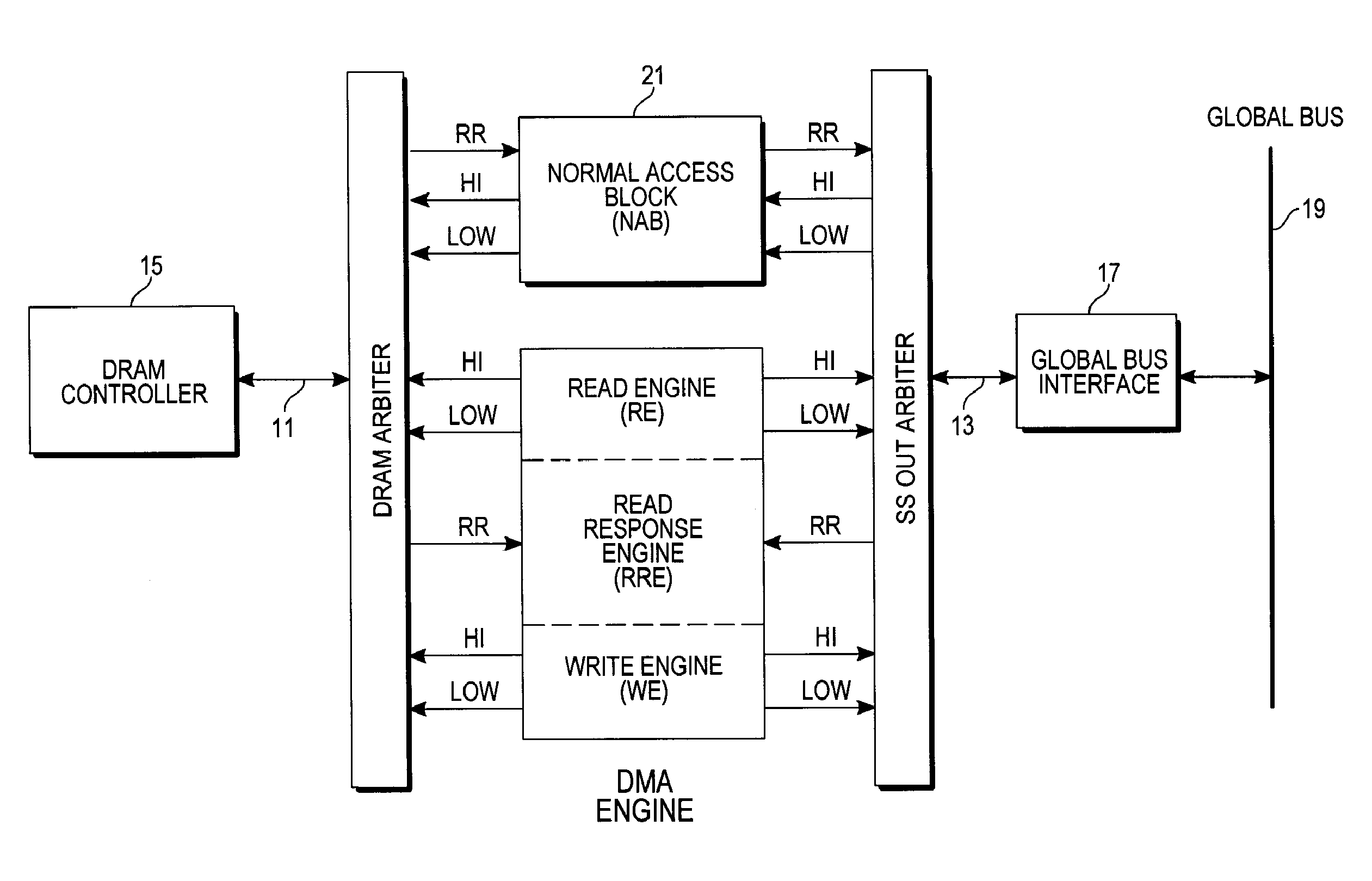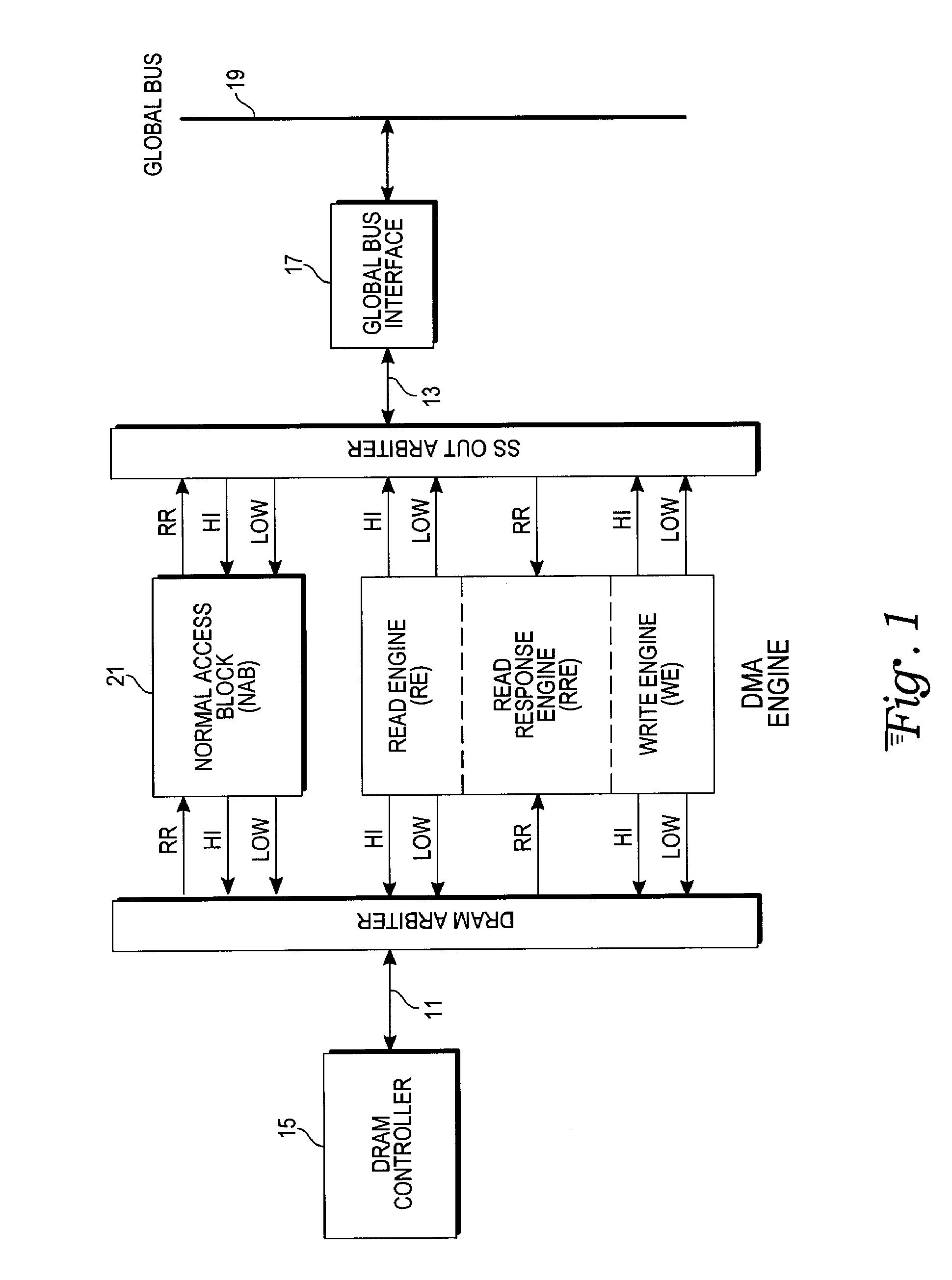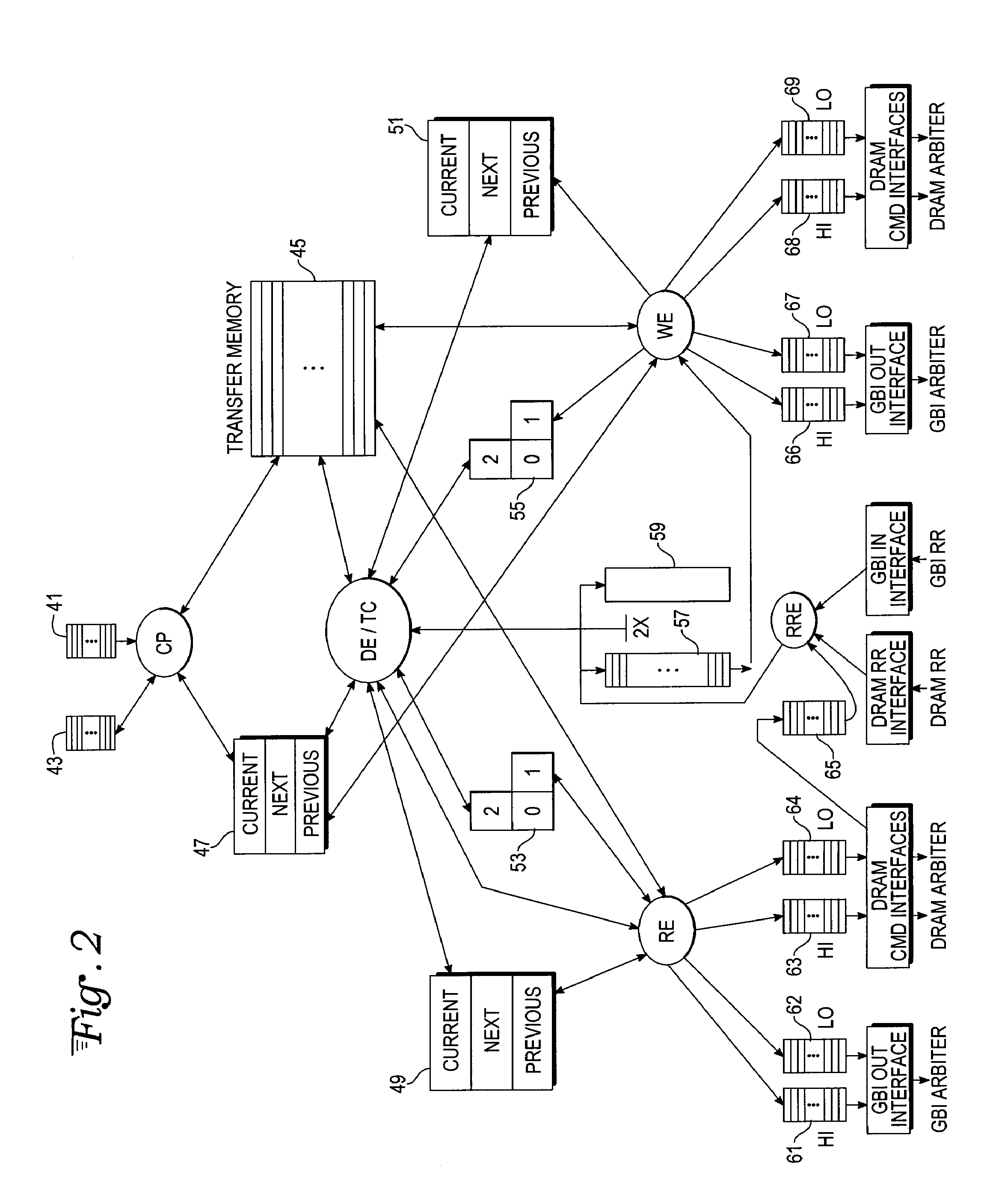Method and system for performing DMA in a multi-core system-on-chip using deadline-based scheduling
a multi-core system and deadline-based scheduling technology, applied in the field of method and system, can solve the problems of tens of memory clock cycles each, high overhead for software ordering, and high overhead for memory access time, and achieve the effect of increasing completion tim
- Summary
- Abstract
- Description
- Claims
- Application Information
AI Technical Summary
Benefits of technology
Problems solved by technology
Method used
Image
Examples
Embodiment Construction
DMA Engine Theory of Operation
Command FIFOs and Parameter Blocks
[0034]With reference to FIGS. 1 and 2, the engine has four 16-deep command FIFO registers 41, servicing four different transfer priorities. Commands are pointers to a parameter block in DRAM or LMEM specifying a transfer's addresses and size, and its deadline. The command FIFO 41 written to determines the priority. Processors post a transfer request by setting up a parameter block, and writing a command to a command FIFO 41.
[0035]Parameter blocks specify a 2-dimensional data transfer. They contain source and destination addresses for the transfer, and transfer size information. An interrupt is optionally generated at end of transfer. Parameter blocks can optionally be chained, the transfers being executed in sequence without requiring additional individual transfer commands after the first command.
Channels and Transfers
[0036]The DMA engine allocates a channel to each transfer. There are a fixed number (128 in this examp...
PUM
 Login to View More
Login to View More Abstract
Description
Claims
Application Information
 Login to View More
Login to View More - R&D
- Intellectual Property
- Life Sciences
- Materials
- Tech Scout
- Unparalleled Data Quality
- Higher Quality Content
- 60% Fewer Hallucinations
Browse by: Latest US Patents, China's latest patents, Technical Efficacy Thesaurus, Application Domain, Technology Topic, Popular Technical Reports.
© 2025 PatSnap. All rights reserved.Legal|Privacy policy|Modern Slavery Act Transparency Statement|Sitemap|About US| Contact US: help@patsnap.com



